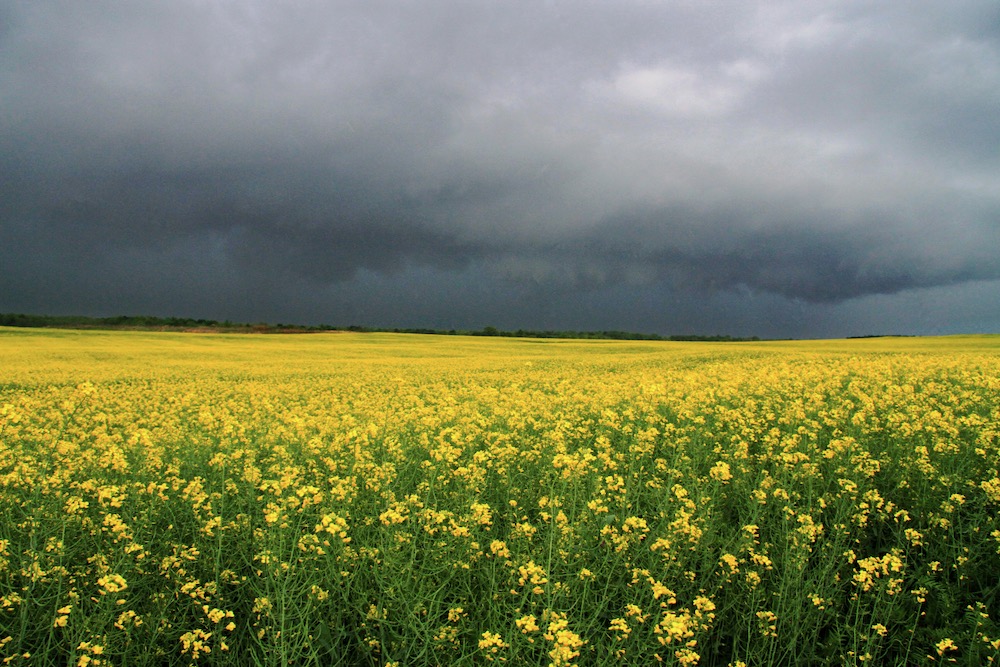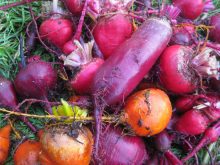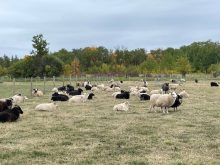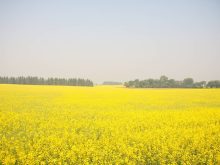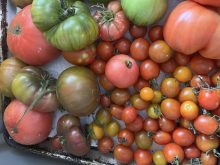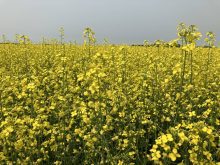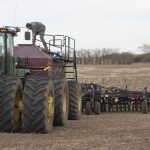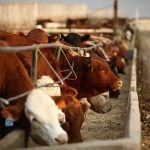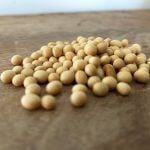Every so often I hear about how farmers in the southern states of the U.S. will soon be growing millions of acres of canola. Of course, what would be grown would be winter canola, since crucifers such as cabbage, collard and broccoli all can survive the Georgia, South Carolina, Alabama and Tennessee winters. They get below-freezing temperatures and snow in many of these areas, particularly on higher ground, but seldom are the temperatures in most areas below -5 to -10 C (23 to 14 F).
I spent six years in the U.S. Deep South at the University of Florida in the 1960s and I can attest that growing of winter canola would pose many, many disease, insect and probably nematode problems. Crops presently grown in the Deep South are generally well adapted and selected for that region.
When I accepted the faculty position at the University of Guelph in 1969 my focus was to be on virus diseases of field and horticultural crops. I acquired a graduate student “from the Nederlands” in 1972 and right away we were asked to look into aphid-transmitted viral diseases of spring canola, fababeans and the cabbage family in general.
Read Also

Gentle treatments for pain in the neck
Heading toward year-end, people unknowingly tense up against the cold and busyness, causing neck pain that can often be treated with appropriate support and gentle mobility, athletic therapist Kathlyn Hossack says.
The canola growing was considered most important, because Ontario was Canada’s major grower of Swedes (rutabagas, yellow turnips). A major problem in this rutabaga industry was the devastating effect of aphid-transmitted turnip mosaic virus on the rutabaga crops. At this time, in the 1970s in Ontario, farmers grew some 5,000 acres of rutabagas worth $6 million to $8 million annually. In today’s terms that’s around $20 million to $25 million. Rutabagas were normally seeded on June 21 and harvested in late October.
Now remember: rutabagas and Argentine canola are virtually the exact same species. There was a fear spring canola could become a major host for spreading the dreaded virulent turnip mosaic virus to their very profitable rutabaga crops.
At the University of Guelph croplands starting in 1972, I grew acres of Argentine and Polish canola seed in April and several plots of Laurentian rutabagas planted in mid-June. This was repeated for two years. By late July the crops of spring canola were maturing and virtually leafless. The rutabagas were at the seedling stage next to the canola crops. No virus diseases were detected in the spring canola crop up to the time it matured in late July. No virus infection was seen in the rutabaga crop despite repeated checks well into July.
In early July we placed several pot-grown rutabagas that were infected with the virulent strain of turnip mosaic virus (TuMV) alongside the rutabaga field.
By late July to early August, every single rutabaga (in the hundreds) was obviously stunted and infected with the virulent strain of this TuMV.
Our conclusions were that spring canola in Ontario did not pose a threat to the very successful rutabaga industry. We also stated that growing winter canola, which was being proposed at the time for Ontario, if successful, could be devastating to both the winter canola and the rutabaga industry.

The information appeared to have fallen on deaf ears, since a few years after I left Guelph for Alberta, winter canola grown in southern Ontario proved susceptible to virulent turnip mosaic virus. As a consequence, this overwintered reservoir of virus in the winter canola proved to be devastating to the rutabaga crops. Rutabaga fields were wiped out and growers lost millions of dollars. The Ontario rutabaga industry is still the biggest in Canada, but the total acreage sank from 5,000 acres to around 1,500 acres today with a farm value of around $10 million.

In total, Ontario grows around 30,000 acres of spring canola and about 10,000 acres of winter canola. Mercedes, a new canola from the U.S., seems to be gaining favour and acres are on the rise. Up to 2020, Ontario only grew a couple of thousand acres of winter canola in the very southwest part of the province. This rise in Mercedes winter canola could also have a destructive effect on the very large Chinese and conventional cabbage industry in Ontario by harbouring the virulent TuMV, which could overwinter on this new winter canola.
My recommendations to Ontario growers, at the time of my tenure at the University of Guelph, was to carefully kill off any overwintered turnips, either by cultivation or herbicide and to avoid dumping unmarketed live turnips on garbage disposal areas. They should be chopped or herbicide-treated on site to prevent the virulent TuMV from moving from these rutabagas to annual weed crucifers or perhaps the rutabaga crop newly planted in mid-June.
‘Typhoid Mary’
To backtrack a few years, the University of Guelph developed a winter canola in 1988 called Winfield. In the next few years thousands of acres were grown on various location in southern Ontario. In the next 10 years the TuMV, carried over winter in the canola, devastated the rutabaga crops as well as devastating the winter canola. Ontario rutabaga production plunged from 100 million lbs. to 30-40 million lbs. of rutabagas. As predicted, the winter canola was a TuMV Typhoid Mary. This virus caused rutabaga yields to crash. In other words, the winter canola was an overwintering host for the destructive TuMV.

A very interesting sideline I came across in southern Ontario was the fact that a very mild strain of turnip mosaic virus was very common in biennial and perennial crucifers. In fact, these wild crucifers were inoculated against the more virulent strain of TuMV. Two wild crucifers stood out: dame’s-violet or dames rocket (Hesperis matronalis) and watercress (Nasturtium officinal). Every time I checked these plants, which were plentiful in Ontario, analysis showed that they were all infected with the mild strain of TuMV, which hardly seemed to influence healthy growth. When I grew potted seedlings of these healthy plants and had them inoculated with either the mild or virulent strain of TuMV, the results were startling. These seedlings, inoculated by rubbing the leaves of the healthy seedlings with sap extracts of either TuMV strain, showed results in a week or so. The virulent strain of TuMV severely stunted both the dame’s-violet and the watercress. Those healthy plants inoculated with the mild TuMV strain hardly showed any symptoms and grew as normally as the non-inoculated checks. When these crucifers inoculated with the mild strain of TuMV were challenge-inoculated with the virulent TuMV, they did not show any stunting or damage or any signs of infection by the virulent destructive strain of TuMV.
I could state that this is perhaps one of the first reported examples of natural inoculation in the wild involving strains of the same virus — that is, TuMV. My graduate student and I were also surprised by the fact that the rutabaga and winter canola selections could not be infected by the mild strain of TuMV. The “vaccinations” (natural infection) were carried out by several very common aphid species.
I will admit that when I left the University of Guelph for Alberta Agriculture, none of the academic faculty seemed interested in this natural phenomenon.
One thing that I did learn from the Ontario rutabaga growers, the best in North America, is that every acre of rutabaga land gets one pound of boron and two ounces of molybdenum micronutrient fertilizer. Perhaps our canola growers should take note?
The inference you can draw from this research, done many years ago in Ontario, is that when you hope to introduce million-acre crops into an established growing area, you could create a multitude of problems for the “new crop” — and for existing crops.
You may well be aware that on the Canadian Prairies, the growing of cauliflower, broccoli, cabbage and turnips, for example, is a real problem, due to the fact that the 20 million or so canola acres in the region provide vast amounts of flea beetles, root maggots and white cabbage butterflies, which devastate many home garden Prairie crucifer crops. Consequently, vegetable crucifers listed above are grown in areas where little or no canola is grown, such as Eastern Canada or British Columbia.
As an aside: canola shoots in the very early bolt stage make very good and edible stir-fry greens.


